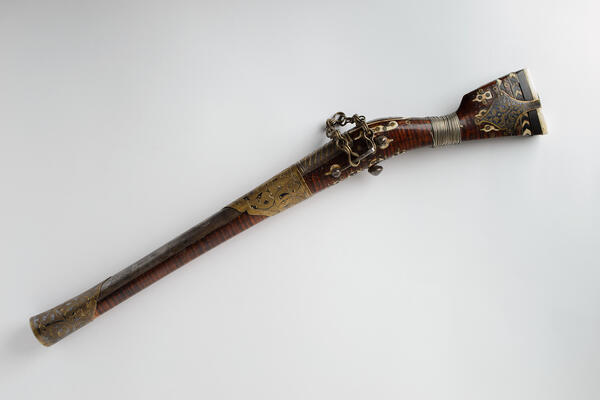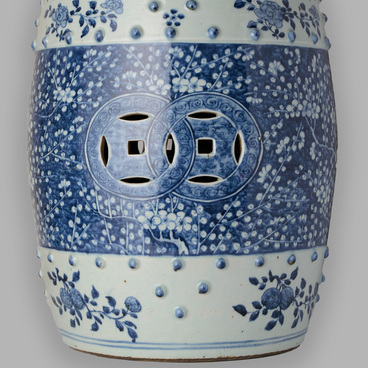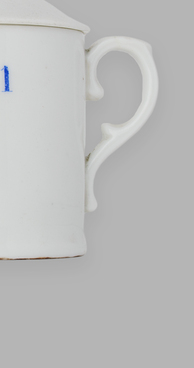Weapon manufacturing has long been one of the most important trades of the peoples of the Caucasus. Their high-quality weapons have always been distinguished by their luxurious and exquisite décor. Locals never parted with their precious weapons and spared no expense in decorating them.
Caucasian pistols had the same flintlocks as shotguns, only smaller. The lock had long and thin jaws. The side bar covering the frizzen spring usually had the shape of an elongated oval.
The lock was often ornamented with gold inlay or stylized floral patterns. The stock was made of walnut, and the butt ended with a bone heel. The wood near the breech end was often inlaid with bone and horn plates. Such pistols had relatively long steel barrels (28–43 cm). The barrel was not grooved, and the pistol did not have sight gear.
The displayed pistol has a large caliber, flaring barrel. It resembles a blunderbuss with a small funnel at the muzzle. The barrel was flared to aid in the loading of powder and shot into the barrel, which was especially convenient for cavalrymen. This design allowed loading the gun with canister shot or simply scrap lead.
The shortened barrel of a blunderbuss made it lighter than a musket but affected the fire precision, as such guns lacked accuracy. The problem was somewhat compensated by a larger killing area when using shot. As a result, the gun was appropriate for shooting while riding a horse where aiming was difficult in any case, and when boarding an enemy ship where shooting occurred at point-blank range.
This
type of gun dates back to the 16th — early 17th century.
This is a single-barrel pistol. The stock and the grip are made of striped wood
decorated with bone inlay. The narrow part of the grip is wrapped with thin
wire. The back of the stock is decorated with a bone plate. The muzzle device, barrel
band, and grip adapter are made of yellow metal and decorated with chasing and
bluing. A chain is attached to the side of the stock.



